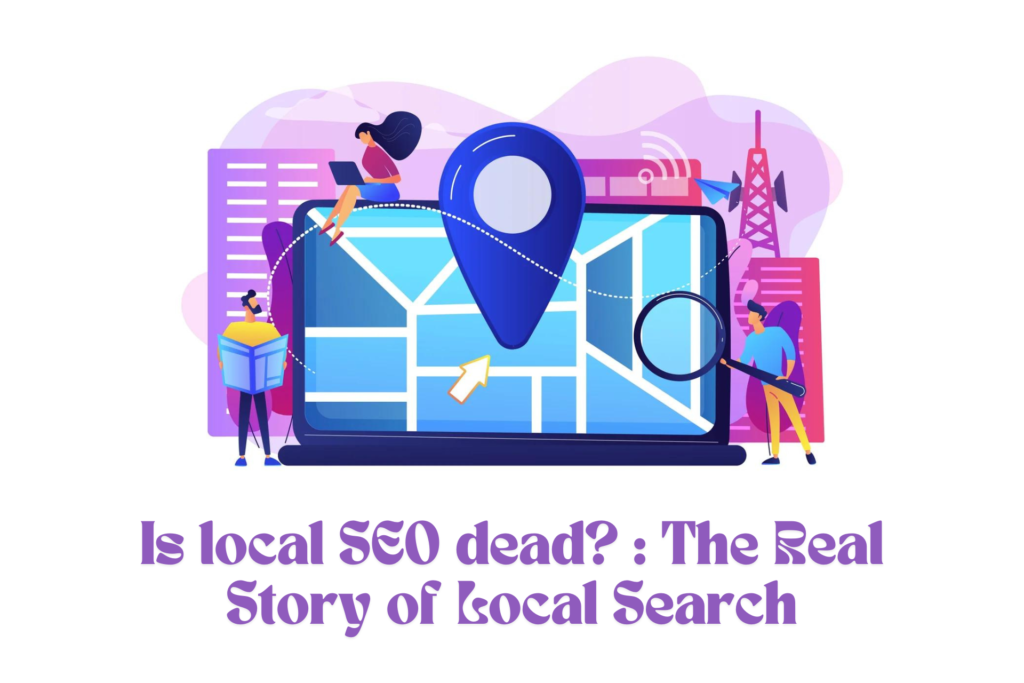
The Importance of Local SEO for Businesses
Local SEO is a digital bridge connecting businesses to their local clientele. It is of great value in visibility and accessibility for local searches that bring in organic traffic, directly to the physical location or the platform. Businesses that continue to use proactive local SEO techniques enhance brand awareness and trust and credibility within the local community, resulting in developing long-term relationships with customers.
Key Components of Local SEO
Certainly, here are the key components of local SEO presented as bullet points:
- Google My Business Optimization:
- Verify and claim your listing on Google My Business.
- Ensure accurate and up-to-date business information (name, address, phone number, hours of operation, etc.).
- Choose relevant categories and subcategories.
- Add high-quality photos and videos.
- Encourage customer reviews and respond promptly.
- NAP Consistency:
- Ensure consistency in name, address, and phone number (NAP) across all online platforms and directories.
- Correct any inconsistencies or inaccuracies promptly.
- Use schema markup to reinforce NAP information for search engines.
- Online Reviews and Rating Management:
- Monitor and manage online reviews on platforms like Google, Yelp, and Facebook.
- Encourage satisfied customers to leave positive reviews.
- React swiftly and professionally to feedback, whether favorable and negative.
- Utilize reviews as input to make goods and services better.
- Website Optimization:
- Optimize website content with local keywords and phrases.
- Create location-specific landing pages, if applicable.
- Ensure the website is mobile-friendly and loads quickly.
- Implement structured data markup to provide search engines with additional context about your business and location.
Local Citations and Backlinks:- Build local citations on reputable online directories, industry-specific websites, and local business associations.
- Seek opportunities for local backlinks from relevant websites and local publications.
- Ensure the consistency and accuracy of business information in citations and backlinks.
- Local Content Creation:
- Create locally relevant content, such as blog posts, articles, and guides.
- Highlight local events, news, and community involvement.
- Incorporate local keywords and phrases naturally into the content.
- Share local content on social media and other digital platforms to increase engagement and visibility.
- Social media presence:
- Maintain your presence on the relevant social media platforms.
- Share updates about your business, promotions, and local events.
- Engage with followers and participate in local conversations.
- Use location-based hashtags and geotags to increase local visibility.
By implementing these key components of local SEO, businesses can improve their visibility in local search results and attract more local customers.
Future Trends in Local Search
Anticipating future trends in local search is essential for businesses to stay ahead in their digital marketing strategies. Here are some potential future trends in local search:
-
Augmented Reality (AR) for Local Discovery: With the simplified and penetrated extension of AR into mobile devices, the idea of a users being inclined toward making use of AR-based applications for discovering the best local businesses and sites comes into play. Businesses can make good use of AR to provide experiences and showcase their products or services in real-world places.
-
Local Voice Search Optimization: With growing use in smart speaker and voice-activated devices, optimizing local voice search will become crucial. Such optimization shall require a business to change its SEO strategies to become aligned with conversational search processes and natural language queries.
-
Predictive and Personalized Search Results: The continued development of algorithms will ensure predictive and personalized search results based upon user preferences, actions, and location history by search engines. So, businesses need to create engaging and relevant content targeted at every user.
-
Local Micro-Moments: Micro-moments are short and intent-driven by the idea of users who really want instant information or help with an issue. Opportunity is in local micro-moments: organizations can deliver timely content about or addresses for problems users want solving, such as last-minute search queries.
-
AI-Powered Local Search Algorithms: Algorithms powered by artificial intelligence and machine learning will take center stage in local search. These technologies can analyze heaps of data to yield results more consistently and with more accuracy based on user preference. Businesses shall consider the relevance of user experience and data quality to gain a higher ranking by AI-X.
-
Local Search on Emerging Platforms: New platforms and technologies like virtual reality, augmented reality, and wearable devices will bring local search beyond traditional channels. Businesses will have to explore opportunities to work on this search optimization and how to connect with users by exploring those emerging platforms.
-
Social Media Integration with Local Search: Social media now turns out to be a potent local search engine that provides information about local businesses and allows the users to see business reviews and make purchasing choices within the platform. Businesses need to have vibrant life on social media by optimizing their profiles for local search more so than before.
-
Zero-Click Searches and Featured Snippets: Zero-click searches show no sign of declining, as users are fed with what they are looking for directly from the search results without needing to click through for more information. Featured snippets and rich snippets are important to ensure visibility to capture more traffic during the zero-click search.
By staying informed about these future trends in local search, businesses can adapt their strategies and stay competitive in an increasingly digital and localized marketplace.
Top Local SEO Strategies in 2024
In the future year, local SEO is set to change with the digital marketing environment. Some of the most important local SEO tactics to catch on are:
-
Hyper-Local Targeting: Fine-tune the selections to fit into such narrowly defined local audiences. For example, demographic, behavior, and proximity-based advanced segmentation can be implemented to reach selected locations. Content and promotions would be beneficial if tailored to the location’s feelings and trend-watching activities.
-
Voice Search Optimization: Content and listings should strictly follow SEO for voice search queries since users are increasing their use of voice-enabled devices. Use conversational phrases and natural language that corresponds with how people speak when using voice search.
-
User-Generated Content: Encourage your customers to create content about and around your business and location. Obtain user-generated content for authenticity and local community interaction. User-generated content should be featured prominently on your website, social media, and Google My Business listing.
-
Local Influencer Partnerships: Collaborate with local influencers and content creators to extend your brand’s reach within the community. Identify the ones with a good following and relevance in line with the target audience. Partner with influencers to develop authentic, creative content promoting your brand and local offerings.
-
Geo-Targeted Advertising: When advertising online, employ geo-targeting to spread the word about the business to the local community effective. Launch ad campaigns with targeted geography, customizing for individual neighborhoods or regions. Utilize geo-fencing techniques to target users within a certain radius of your business location.
-
Local Link Building: Establishing relationships with local businesses, groups, organizations, and publications can yield valuable backlinks. Collaborate on local events, sponsorships, or community initiatives that would earn you local media exposure and backlinks. Seek out opportunities to contribute guest posts or articles to local blogs or news websites.
-
Mobile-First Optimization: Begin with the mobile optimization of your website and listings. Optimize loading times, navigation, and design to ensure that mobile users have a high level of user experience. Optimize the pages and forms to serve mobile for your people to enhance user experience and conversion rates.
-
Local Schema Markup: Use schema markup to give search engines structured data about your business and location. Include schema markup with details like the address, phone number, business hours, and reviews in the relevant field. This way, you will provide context to search engines that enhance your content visibility in local queries.
Incorporating these top local SEO strategies into your marketing endeavors is a great way to build informed visibility, attract local clientele, and tout business development in 2024.






